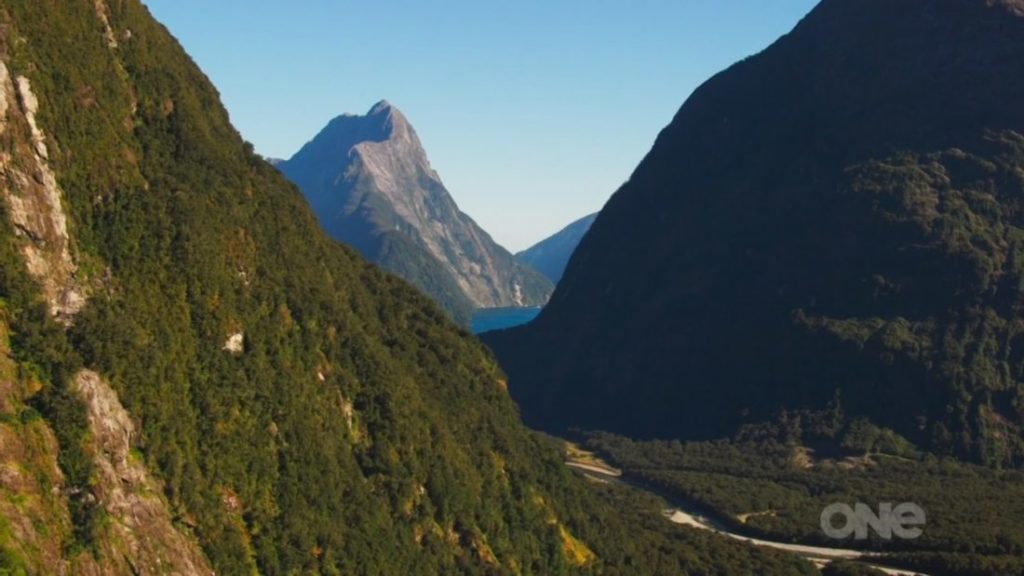In Railway Walks with Julia Bradbury episode 4 viewers are treated to an enchanting journey into the heart of Scotland, where the rugged landscapes are as captivating as the history they hold. This episode takes Julia Bradbury to the famous Speyside Way, renowned not just for its scenic beauty but also for its integral connection to the world of whisky.
The Speyside Way, stretching through the dramatic Scottish Highlands, offers more than just a walking path; it’s a voyage into the rich heritage of one of Scotland’s most cherished industries. As Julia explores this trail, the journey between the quaint villages of Craigellachie and Ballindaloch unfolds, tracing the path of an old railway line that once connected remote areas to the bustling world of whisky production.
The episode beautifully captures the essence of this region, known for its sweeping valleys and tranquil rivers that contribute to the whisky-making process. The Speyside area is dotted with numerous distilleries that leverage the pure waters of the River Spey, making this path a pilgrimage for whisky enthusiasts.
Julia’s trek along the Speyside Way is not only a physical journey but also a historical exploration. The path follows the old railway, crucial in the past for transporting barrels of whisky to the global market, linking remote Speyside to the throbbing heart of commerce. The dismantled railway tracks tell tales of a bygone era, and Julia, with her insightful commentary, helps the viewer imagine the bustling activity that once characterized this now tranquil path.
Throughout the episode, the interaction between the natural elements and human history is a recurring theme. Julia points out how the landscape has shaped the local economy and culture, particularly in how the natural resources of the area have been harnessed to produce some of the world’s finest whiskies.
Railway Walks with Julia Bradbury episode 4
Moreover, this installment of “Railway Walks” goes beyond just the visual journey. It delves into the impact of the railway on the local communities and the transformation over the years, from isolated hamlets to globally recognized whisky production hubs. The narrative also highlights the revival of interest in these old tracks, now celebrated as recreational trails that offer both locals and tourists a glimpse into Scotland’s industrial past and natural beauty.
The episode concludes with Julia reflecting on the unique blend of natural beauty, historical depth, and cultural significance that the Speyside Way embodies. This segment of her walking series not only showcases the allure of Scotland’s landscapes but also emphasizes the deep connections between the land and its people who have cultivated a world-renowned industry around the natural bounty of their homeland.
In sum, “Railway Walks with Julia Bradbury: Episode 4” is more than just a scenic stroll through Scotland’s countryside. It is a thoughtful exploration of the interplay between human endeavor and natural environment, a celebration of Scottish heritage and an invitation to appreciate the quiet beauty of the Speyside Way.
The Whisky Railway: Strathspey’s Liquid Gold Line
Introduction to the Strathspey Railway
Picture a time when steam and spirit intertwined, creating a symphony of progress and tradition. The Strathspey Railway, a marvel of 19th-century engineering, wasn’t just a set of tracks laid through the Scottish highlands. It was the lifeblood of a region, pulsing with the rhythm of commerce and community.
Built in 1863, this railway line snaked its way through the heart of Speyside, connecting remote distilleries to the wider world. The iron horse brought more than just passengers; it carried the promise of prosperity. As the tracks gleamed in the Scottish sun, they reflected the ambitions of local distillers and the dreams of a nation thirsty for its golden nectar.
The Speyside region: Heart of Scottish whisky production
Nestled in the northeast of Scotland, Speyside is a land where water and barley dance to create liquid perfection. This region, cradled by the meandering River Spey, is to whisky what the Napa Valley is to wine. It’s a place where nature’s bounty meets human craftsmanship, resulting in some of the world’s most beloved single malts.
Speyside’s unique geography plays a crucial role in its whisky production. The pure, soft water of the River Spey and its tributaries infuses each dram with character. Meanwhile, the gentle hills and sheltered glens create microclimates perfect for aging whisky. It’s no wonder that this compact region is home to over half of Scotland’s distilleries, each one a testament to centuries of tradition and innovation.
How railways transformed the whisky industry
The arrival of the Strathspey Railway was nothing short of revolutionary for the whisky industry. Before its construction, distilleries were isolated, relying on horse-drawn carts and river boats to transport their precious cargo. This limited their production and reach, keeping Speyside’s liquid gold a well-guarded secret.
However, the railway changed everything. Suddenly, barrels of whisky could be transported quickly and efficiently to blending houses in the south and ports for export. This newfound connectivity allowed distilleries to increase production, knowing their whisky could now reach eager markets across Britain and beyond. The railway didn’t just transport whisky; it carried the essence of Speyside to the world, transforming a local craft into a global industry.
Moreover, the railway brought in essential supplies like barley and coal, making production more efficient. It also facilitated the movement of skilled workers, allowing expertise to spread throughout the region. The Strathspey Railway wasn’t just a means of transport; it was the catalyst that propelled Speyside whisky onto the world stage, forever changing the landscape of the spirits industry.
A Journey Through Time: Walking the Strathspey Railway
Craigellachie: Starting point and whisky hub
Imagine stepping off a time machine into the heart of Speyside’s whisky country. That’s the feeling you get when you arrive in Craigellachie, a village that whispers tales of whisky and steam. This picturesque spot, nestled where the Fiddich meets the Spey, isn’t just a dot on the map—it’s the gateway to a liquid gold adventure.
As you stand on the old railway platform, you can almost hear the ghostly whistle of steam engines past. Craigellachie station, once a bustling hub, now stands as a silent sentinel to a bygone era. But don’t let the quiet fool you. The spirit of the railway lives on, intertwined with the very essence of the whisky that made this region famous.
Aberlour: Whisky and shortbread town
A short walk along the old railway line brings you to Aberlour, a town that tantalizes both your nose and taste buds. Here, the aroma of malting barley mingles with the sweet scent of baking shortbread, creating a uniquely Scottish bouquet. It’s as if the town itself is inviting you to indulge in its dual heritage.
The Aberlour distillery, standing proud since 1879, is a testament to the town’s whisky-making prowess. Meanwhile, the Walker’s shortbread factory adds a sweet counterpoint to the spirited atmosphere. As you wander the streets, you’ll find that Aberlour embodies the perfect pairing of whisky and shortbread—a match made in highland heaven.
Carron and Imperial: A tale of silent distilleries
Continuing our journey, we come upon Carron, a village that tells a bittersweet story of whisky’s ebb and flow. Once home to the Imperial Distillery, Carron now stands as a poignant reminder of the industry’s ever-changing tides. The distillery buildings, though silent, still exude an air of faded grandeur.
As you explore the remnants of this once-thriving whisky hub, you can’t help but feel a sense of nostalgia. The Imperial Distillery, opened in Queen Victoria’s Diamond Jubilee year, was a crown jewel of its time. Now, its silent stills and empty warehouses speak volumes about the cyclical nature of the whisky business. Yet, even in its quietude, Carron holds the promise of resurrection—a whisper of potential rebirth in every abandoned cask.
Knockando and Tamdhu: Modern whisky production
Our railway walk takes an exciting turn as we approach Knockando and Tamdhu, where the past seamlessly blends with the present. These distilleries, still very much alive and kicking, offer a glimpse into the modern face of Speyside whisky production. Here, tradition dances with innovation in a never-ending ballet of spirit-making.
At Knockando, you’ll find a distillery that has been producing liquid gold since 1898, yet embraces modern techniques. The perfectly manicured grounds and gleaming copper stills are a feast for the eyes. Just a stone’s throw away, Tamdhu stands as a beacon of revival. After a period of silence, it roared back to life in 2012, proving that in the world of whisky, it’s never too late for a comeback. Both distilleries serve as vibrant reminders that while the railway may be gone, the spirit it helped nurture continues to flow strong.
The Whisky-Railway Connection: More Than Just Transportation
The puggy trains: Distillery-owned locomotives
Picture this: a pint-sized locomotive, no taller than a man, puffing and chugging its way through the misty Speyside hills. These were the puggy trains, the unsung heroes of the whisky industry. Affectionately named for their squat, bulldog-like appearance, these miniature marvels played a crucial role in the day-to-day operations of many distilleries.
Owned and operated by the distilleries themselves, puggy trains were the workhorses of the whisky world. They shuttled barley, coal, and other raw materials from the main railway lines directly into the heart of the distilleries. Moreover, these industrious little engines transported the finished product – casks of golden whisky – back to the main lines for distribution. The puggy trains were more than mere machines; they were the vital link between the isolated world of whisky production and the broader railway network that connected Speyside to the rest of the world.
How railways facilitated whisky production and distribution
The arrival of the railways in Speyside was nothing short of revolutionary for the whisky industry. Before the iron horse thundered through the glens, distilleries were limited by their remote locations. Transportation of raw materials and finished products relied on horse-drawn carts and river boats, a slow and often unreliable process. The railways changed all that, ushering in a new era of efficiency and expansion.
With the advent of rail transport, distilleries could now receive supplies quickly and in larger quantities. This allowed for increased production and more consistent quality. Equally important, the railways provided a fast and reliable means of getting whisky to market. Suddenly, Speyside’s liquid gold could reach the blending houses of the Lowlands and the thirsty markets of England and beyond in a fraction of the time it once took. This expansion of reach not only boosted sales but also spread the reputation of Speyside whisky far and wide, cementing its place as some of the finest in the world.
The Strathspey Railway wasn’t just about whisky; it was the lifeblood of the communities it served. One of the most charming aspects of this line was the ‘request halt’ system. Imagine being able to flag down a train like you would a taxi! This system allowed even the smallest hamlets along the line to be connected to the wider world, fostering a sense of community and reducing the isolation of rural life.
Perhaps nowhere was the social impact of the railway more evident than at the Annual Granary Ball held at Ballindalloch Station. This grand event saw up to 1,000 revelers arriving by special trains from as far as Aberdeen. The station and its surroundings were transformed into a vibrant party venue, with music, dancing, and, of course, plenty of local whisky. These balls became legendary, a testament to the railway’s role in bringing people together and creating shared experiences. They represent a time when the railway was more than just a means of transport – it was the beating heart of social life in Speyside.
Conclusion Railway Walks with Julia Bradbury episode 4: Legacy of the Strathspey Railway
The enduring impact on Speyside’s whisky industry
The whistle of the Strathspey Railway may have fallen silent, but its echo still reverberates through the glens and distilleries of Speyside. This iron road, once the lifeline of the region, has left an indelible mark on the whisky industry that continues to shape its present and future. The railway’s legacy is as rich and complex as the finest single malt, with notes of innovation, expansion, and transformation.
Today, as you sip a dram of Speyside whisky, you’re tasting more than just malted barley and pure Scottish water. You’re savoring a history of progress and adaptation, set in motion by the arrival of the railway. The Strathspey line facilitated a boom in whisky production, allowing distilleries to expand their operations and reach new markets. This growth laid the foundation for Speyside’s dominance in the whisky world, a position it proudly maintains to this day. The spirit of innovation sparked by the railway continues to drive the industry forward, balancing tradition with modern techniques to produce some of the world’s most beloved whiskies.
Preservation efforts and nostalgia
While the tracks may have been lifted and the stations repurposed, the memory of the Strathspey Railway lives on in the hearts and minds of locals and whisky enthusiasts alike. Preservation efforts have transformed sections of the old line into walking trails, allowing visitors to literally follow in the footsteps of whisky history. These paths offer more than just a pleasant stroll; they’re a journey through time, each step revealing the intertwined stories of rail and whisky.
Nostalgic reminders of the railway’s heyday dot the landscape. Old station buildings have found new life as visitor centers, cafes, and even distillery tasting rooms. The Speyside Way, a long-distance walking route, incorporates much of the old railway line, inviting modern adventurers to experience the same views that once greeted passengers and whisky barrels alike. This blend of preservation and repurposing ensures that the railway’s story continues to be told, connecting new generations to this pivotal chapter in Speyside’s history.
The future of whisky transportation in Scotland
As we look to the future, the spirit of the Strathspey Railway lives on in new forms of whisky transportation. While trains no longer chug through the heart of Speyside, the lessons learned from this era continue to influence the industry. Modern distilleries, learning from the efficiency brought by the railways, have developed sophisticated logistics networks that span the globe, ensuring that Speyside’s finest reaches enthusiasts from Tokyo to New York.
Innovation in transportation continues to shape the whisky industry. Sustainable practices, inspired by the efficiency of rail transport, are becoming increasingly important. Some distilleries are exploring electric vehicles for local transportation, while others are optimizing their supply chains to reduce carbon footprints. The future may even see a return to rail, with proposals for new, environmentally friendly train lines to service the whisky industry. Whatever form it takes, the future of whisky transportation in Scotland will undoubtedly draw inspiration from the pioneering spirit of the Strathspey Railway, ensuring that Speyside’s liquid gold continues to flow to eager glasses worldwide.
F.A.Q. Railway Walks with Julia Bradbury episode 4
Q.: What is “Railway Walks with Julia Bradbury: Episode 4” about?
A.: Episode 4 of “Railway Walks with Julia Bradbury” showcases Julia’s exploration of the Speyside Way in Scotland, a route historically linked to the whisky industry. This episode delves into the scenic beauty of the Scottish Highlands and the historical significance of the old railways that once facilitated the whisky trade, connecting remote distilleries to global markets.
Q.: What significance does the Speyside Way hold in Scotland’s whisky production?
A.: The Speyside Way is crucial in Scotland’s whisky heritage, traversing a region dense with distilleries that benefit from the pure waters of the River Spey. This path is not only a picturesque walking route but also a journey through the heart of Scotland’s whisky production, showcasing the natural and human elements that contribute to the craft.
Q.: How did the old railways impact the local whisky industry?
A.: The railways revolutionized the local whisky industry by improving the efficiency of transporting raw materials and finished products. They connected remote distilleries in Speyside to larger markets, facilitating a surge in production and distribution that transformed local crafts into globally recognized brands.
Q.: What can viewers expect to see in this episode regarding the natural environment?
A.: Viewers will experience the stunning landscapes of the Scottish Highlands, including sweeping valleys and tranquil rivers that play a critical role in the whisky-making process. The episode highlights how these natural elements not only shape the region’s beauty but also its economic and cultural fabric.
Q.: How does Julia Bradbury’s narrative enhance the viewer’s experience of the Speyside Way?
A.: Julia Bradbury provides insightful commentary that enriches the viewer’s understanding of the historical and cultural significance of the Speyside Way. Her narratives help viewers imagine the bustling past of these now tranquil paths and appreciate the deep connection between Scotland’s natural landscapes and its whisky heritage.




